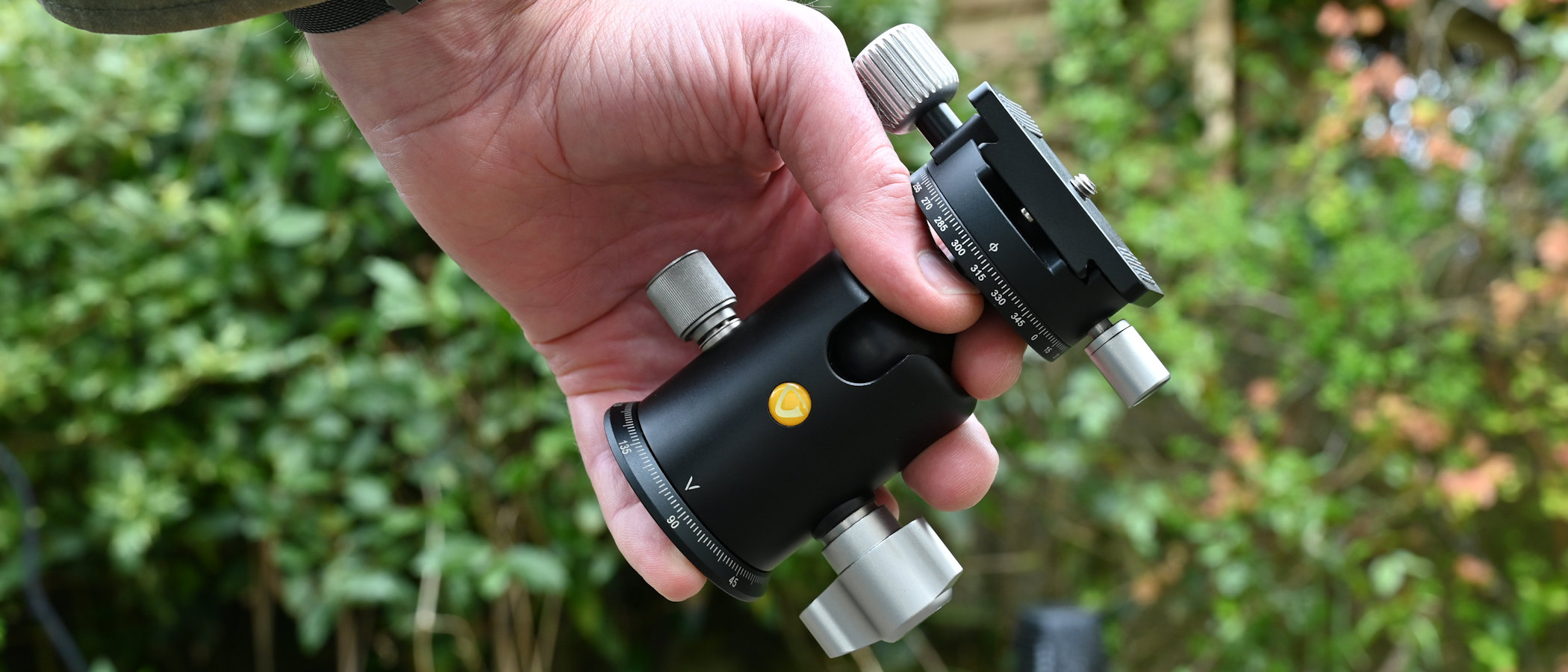Digital Camera World Verdict
I’ve used ball heads with just a single locking knob, but the Vanguard VEO BH-250S is a feast for the fingers and thumbs. Sprouting no less than five knobs, it’s supremely sophisticated and voraciously versatile, along with a mighty 25kg maximum load rating.
Pros
- +
Dual axis panning
- +
Easy leveling
- +
Strong 25kg load rating
Cons
- -
Bubble level obscured by QR plate
- -
Necessarily complex
- -
Pretty pricey
Why you can trust Digital Camera World
If you can keep a level head when all about you are losing theirs, you might just get a winning shot. And leveling is really what the VEO BH-250S ball head is all about. Naturally, any ball head makes leveling up fairly easy, even on tricky terrain where it can be a time-consuming chore to level the tripod legs on which the head is mounted, by monkeying around with individual leg section extension lengths. But if the tripod legs aren’t leveled, things go askew if you start panning, which we’ll come to later. That’s where the ‘dual axis’ nature of this specialized ball head comes into its own, enabling it to jostle for a position in the best ball heads for tripods hall of fame.
The other ‘big’ thing about the head is that it has a really hefty 25kg maximum load rating. As such, it pairs well with the similarly mighty Vanguard VEO 3+ 303CBS tripod, for which the head is included as a complete kit. It’s also the perfect add-on for shooting stills with the similarly strong Vanguard Alta Pro 3VRL 303CV 18 video tripod, thanks to the quick-release nature of this kit's video head and the facility to pop the ball head onto the tripod in its place.

Vanguard VEO BH-250S: What's changed?
Vanguard makes a range of VEO ball heads, including the VEO BH-110S, BH-160S and this BH-250S. They have maximum load ratings of 10kg, 15kg and 25kg respectively. All three have a dual axis design but the BH-250S is the only one to feature a friction adjuster, more useful when using heavy combinations of cameras and lenses.
Vanguard VEO BH-250S: Specifications
| Material | Aluminum |
| Maximum load | 25kg |
| Base diameter | 58mm |
| Plate type | Acra-Swiss |
| Pan lock | Yes (2 locks) |
| Friction control | Yes |
| Bubble/spirit levels | 1 bubble |
| Width/height | 105x121mm |
| Weight | 645g |
Vanguard VEO BH-250S: Price & Availability
The VEO BH-250S is the top-of-the-range ball head in the series and costs around $140/£150, whereas the smaller BH-160S and BH-110S cost around £120/$120 and $100/£100 respectively. The price compares favorably with the likes of the similarly Arca-Swiss compatible (but not dual axis) Manfrotto XPRO Ball Head with Top Lock (one of my personal favorites) which has a 15kg load rating and a list price of around $269/£221, although it’s often discounted in the retail chain.
Vanguard VEO BH-250S: Design & Handling
I’ve been very impressed with some of Vanguard’s up-market tripod legs and heads recently. This one follows suit, with a high standard of engineering that’s immediately obvious as soon as you take the head out of its retail box. The main components are machined from aerospace-grade aluminum, using a high-precision CNC (Computer Numerical Control) manufacturing process.
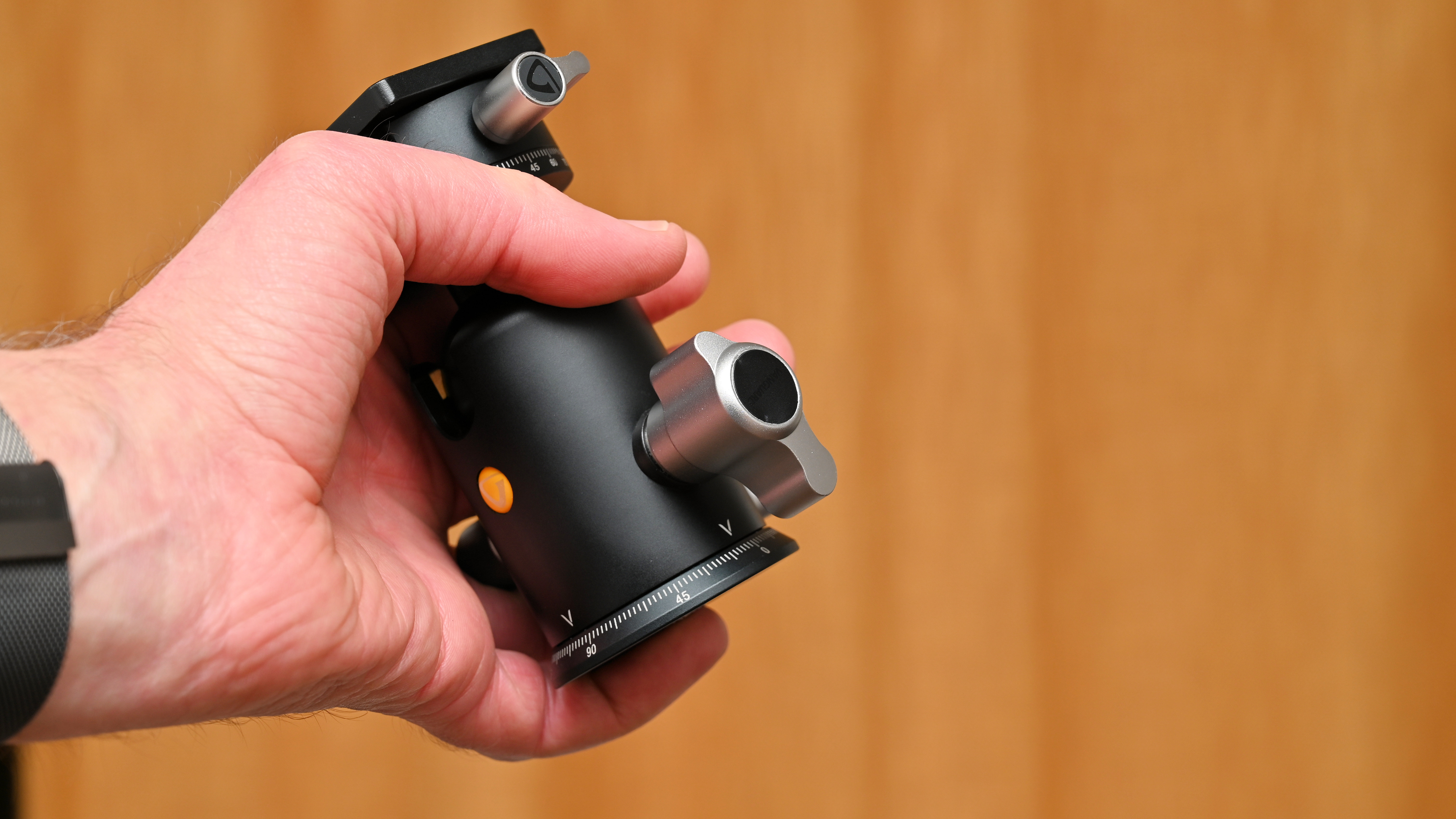
It's certainly a powerful head, with its 25kg load rating and large 58mm base diameter but, as they say, power is nothing without control – and that’s where the BH-250S really comes into its own.
Starting at the bottom, things look pretty conventional. The head has a 3/8” mounting thread and is supplied with a 1/4” adaptor, so it should fit on just about any set of sturdy tripod legs. There’s a main locking/release knob on one side and an adjustable friction damper knob directly opposite.
Given the hefty maximum load rating, the friction adjuster comes in handy when using heavier kit, like a chunky camera with a big and weighty telephoto lens.
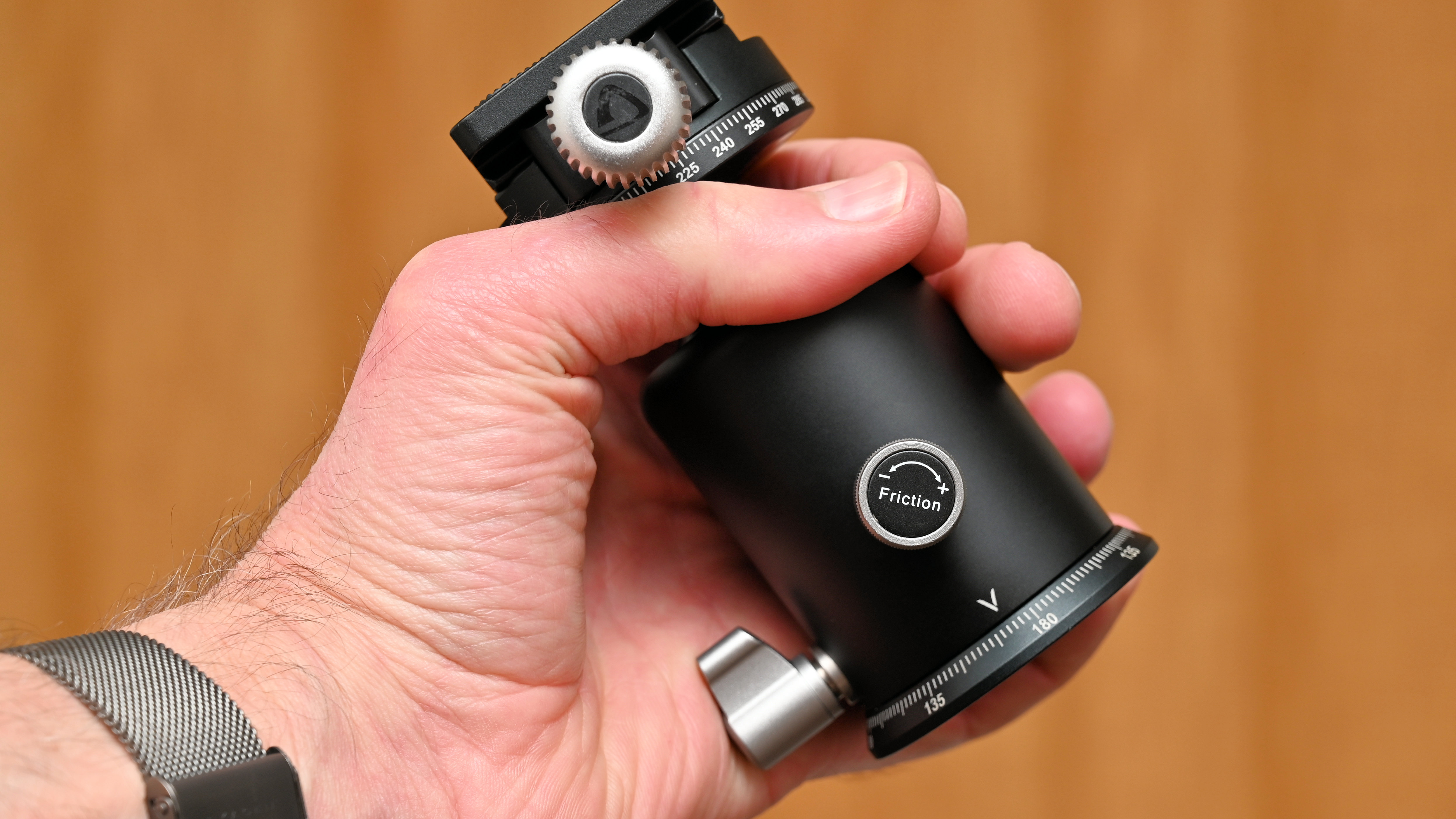
Between the main locking and friction adjuster knobs is a lock/release knob for panning. This comes complete with a calibrated scale and enables easy panning of the entire head while the tilt and swivel adjustments of the ball head remain locked in place. That’s fine up to a point. If you’re setting up your tripod on uneven ground and the tripod spyder isn’t quite level, it’s easy to compensate by adjusting the ball head, so it’s at a slight angle.
However, as soon as you start panning, for example when tracking a moving subject, taking a sequence of shots for stitching into a panorama, or even shooting video, the axis will tilt from the horizontal and you’ll end up with the camera on the skew. That’s where the ‘dual axis’ design comes in useful. Like its smaller siblings, the BH-250S has a secondary panning movement with its own locking knob, directly beneath the quick-release plate for attaching the camera.
The upshot is that you can have the ball head at an angle to compensate for the tripod not being level, and still pan effectively without any unwanted tilt, using the upper panning mechanism.
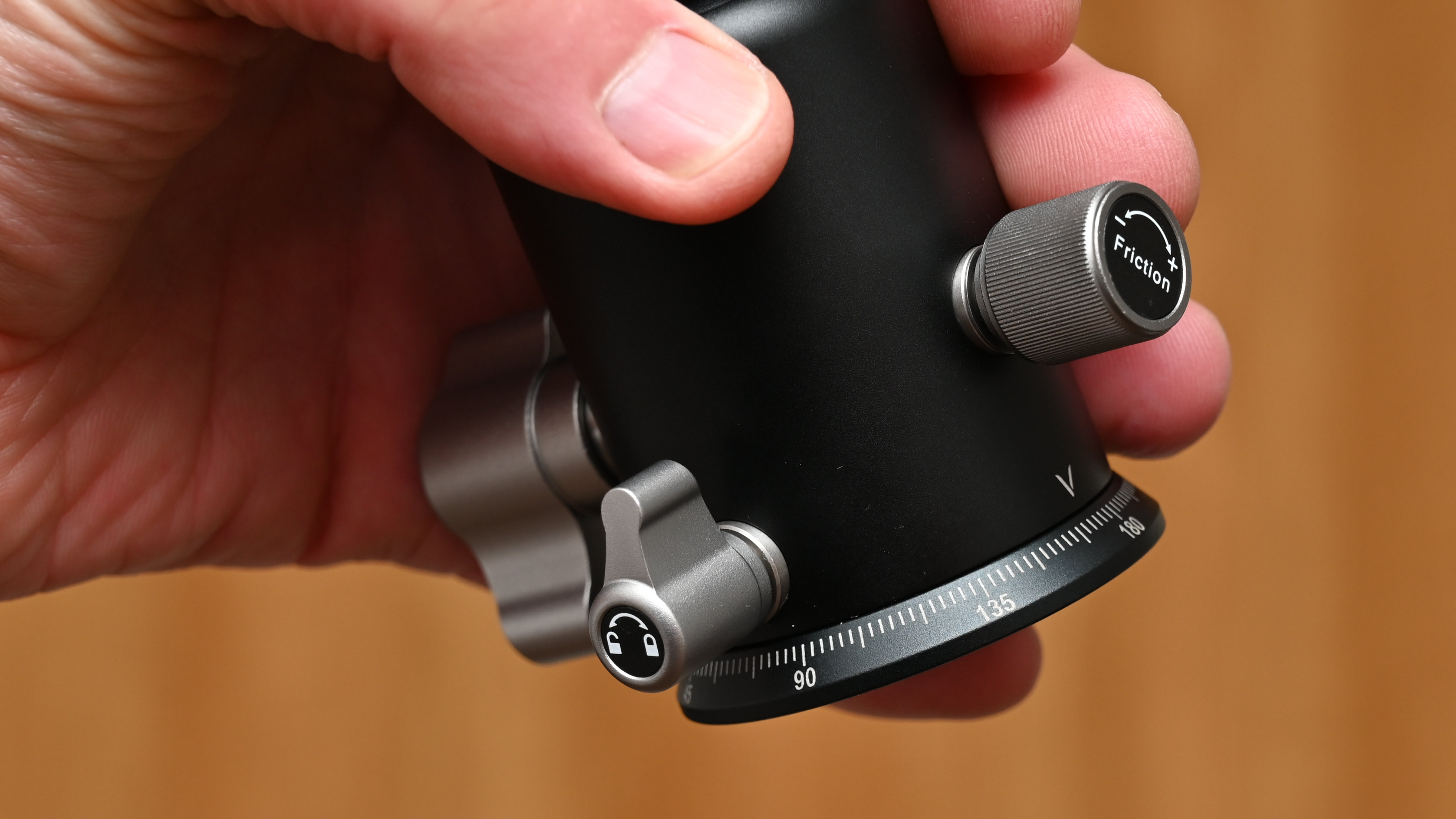
To help with leveling, there’s a bubble level featured in the platform at the top of the head. The only problem is that it’s at least partially and generally fully obscured when you attach the quick-release plate to the head. This makes it difficult to compensate for any sag when mounting a heavy camera. On the plus side, most cameras these days have highly effective ‘virtual horizons’ that can make bubble levels all but redundant.
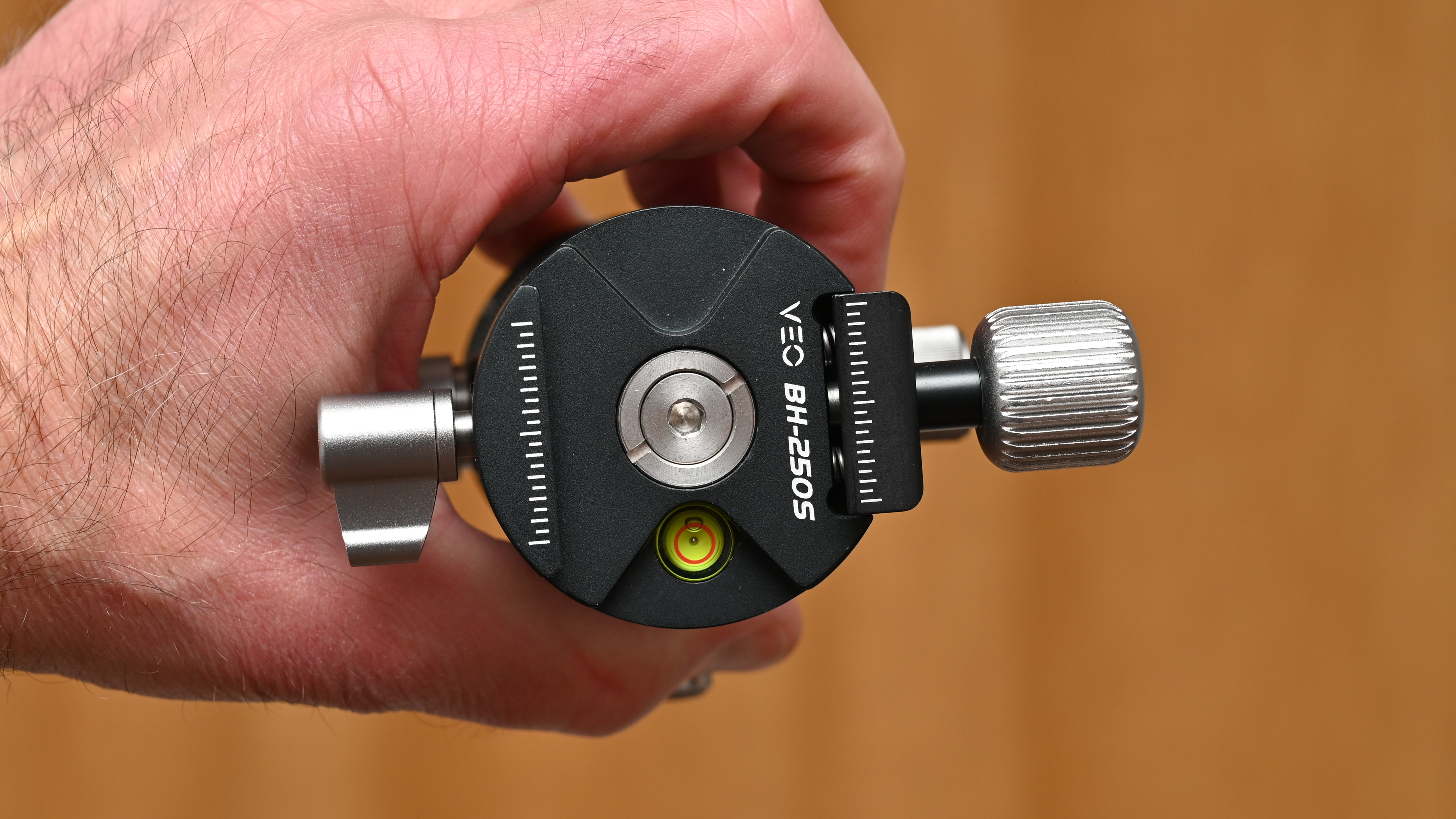
Vanguard VEO BH-250S: Photo Performance
I tested the VEO BH-250S ball head with both of the Vanguard VEO 3+ 303CBS and Vanguard Alta Pro 3VRL 303CV 18, two of Vanguard’ heaviest-duty tripods, both of which have a 25kg maximum load rating to match the head. Naturally, you’d be hard-pressed to find a camera and lens combination that gets anywhere near that weight but, with chunky DSLRs and big telephoto lenses, I found the head to be very solid and stable.
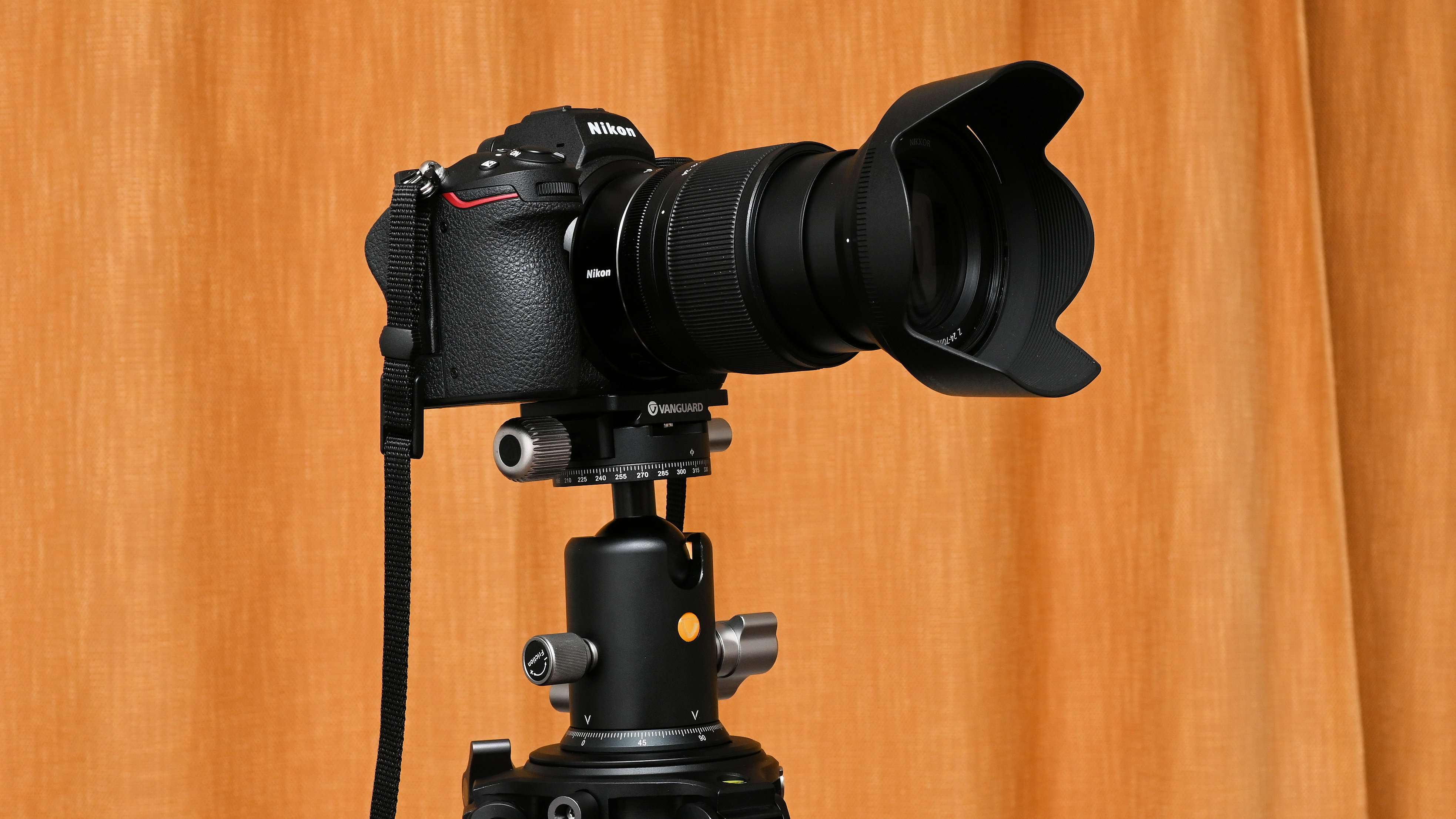
With the sheer complexity and sophistication of the head comes a necessarily large number of four control knobs, plus a locking/release knob for the Arca-Swiss compatible quick-release plate. Even so, it’s easy to find your way around and to remember which knob is which. The main ball locking/release knob has its own individual profile, whereas the two panning knobs have an identical but different shape to the other knobs. The friction adjuster is again different, as is the knob for the quick-release plate. All in all, everything’s intuitive and easily memorable.
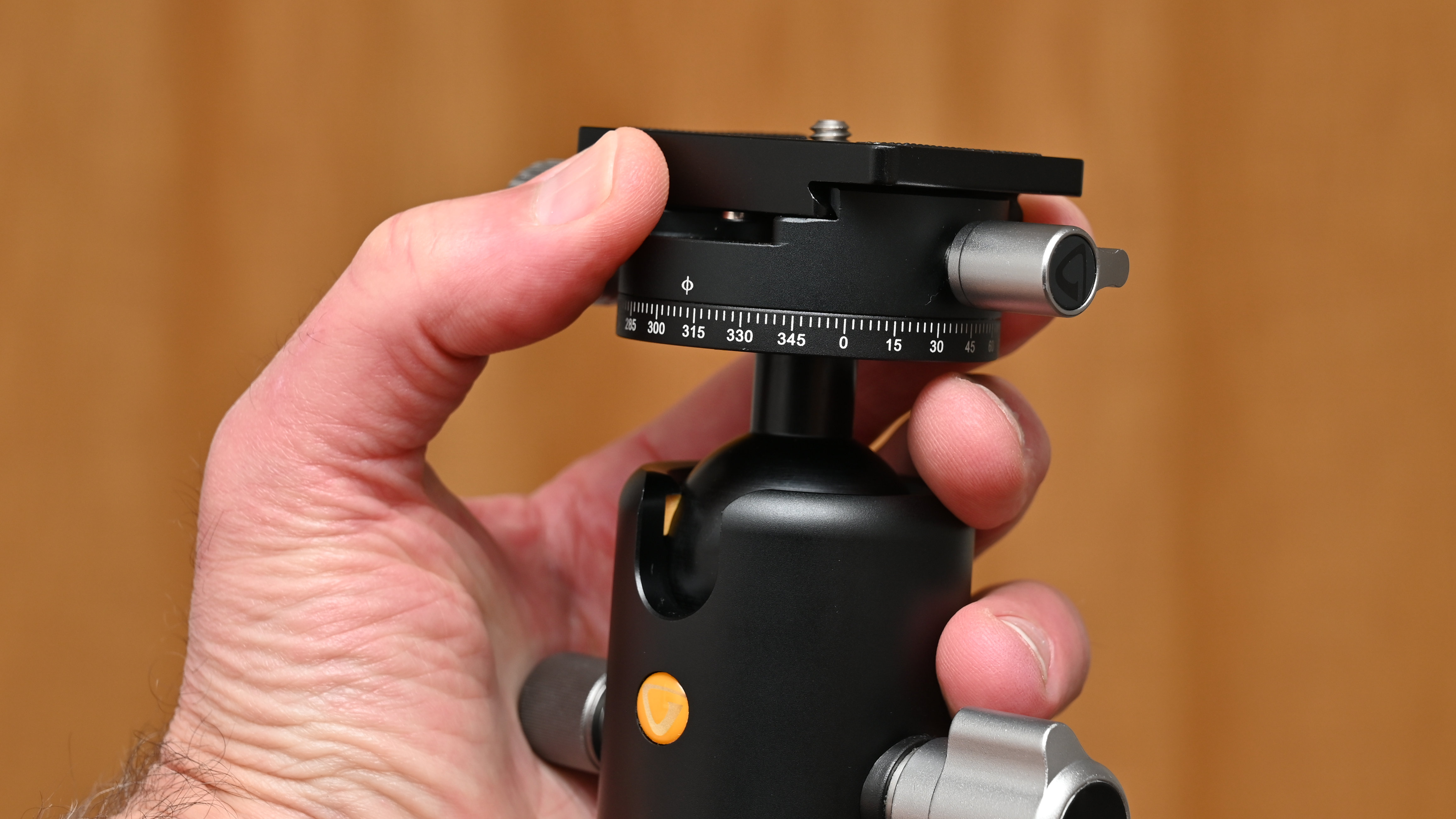
I like that the main locking knob has a smooth roll-off between locked and unlocked positions and benefits from the additional friction adjuster. There’s also minimal sag after tightening the locking knob and letting go of the camera. The upper panning knob, which is more like a lever in shape, is spring-loaded so you can pull it outwards, rotate it, and set it to a convenient orientation. The same goes for the main locking knob. I also find the calibrated scales for both panning sections useful, although it’s a shame that the bubble level is obscured with the quick-release plate mounted in place.
The quick-release plate itself has studs underneath, front and back, which is a good safety feature as it prevents the plate sliding off if the locking knob is inadvertently loosened. All the adjustments and movements work with smooth precision, making the overall performance highly impressive.
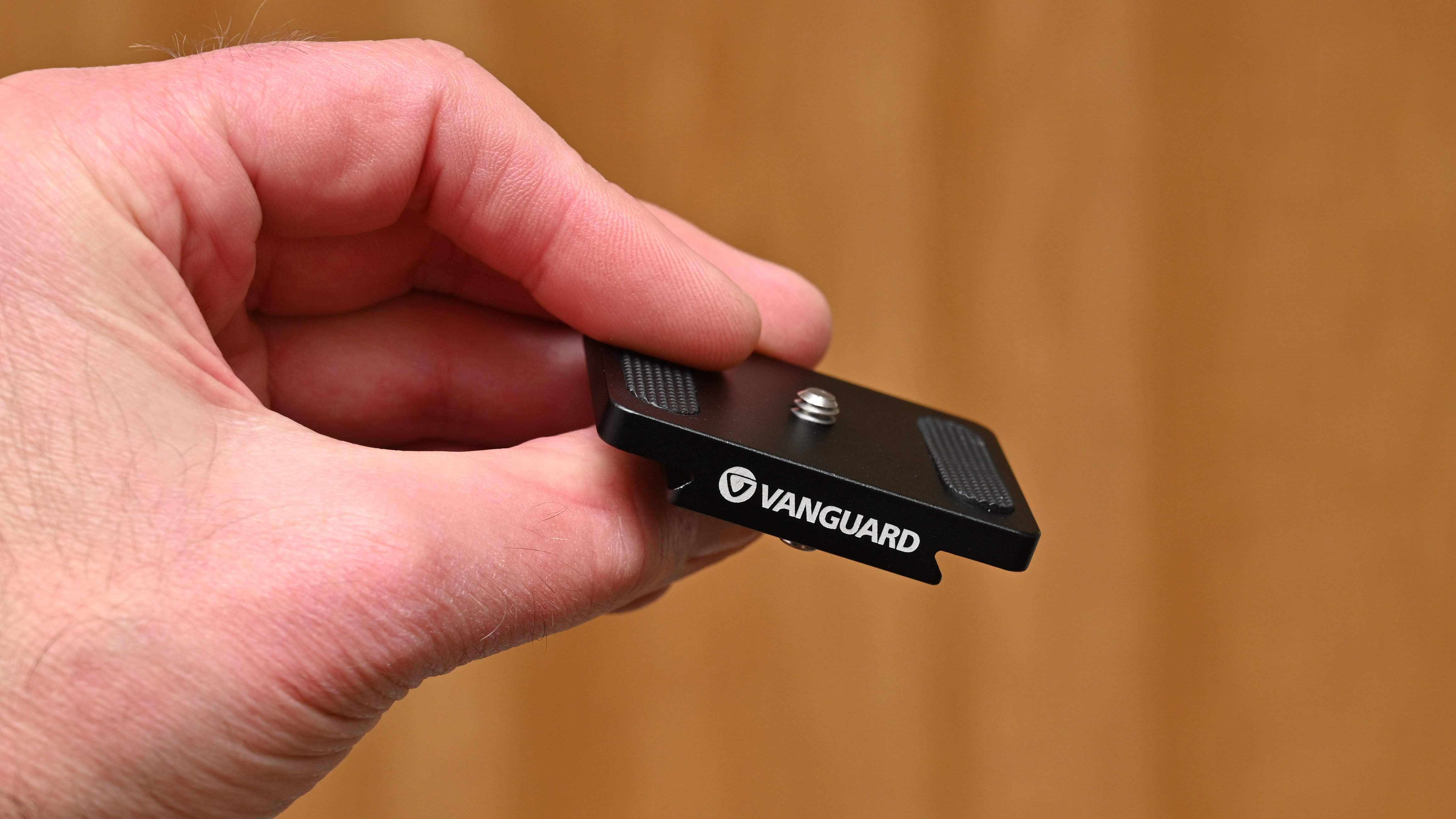
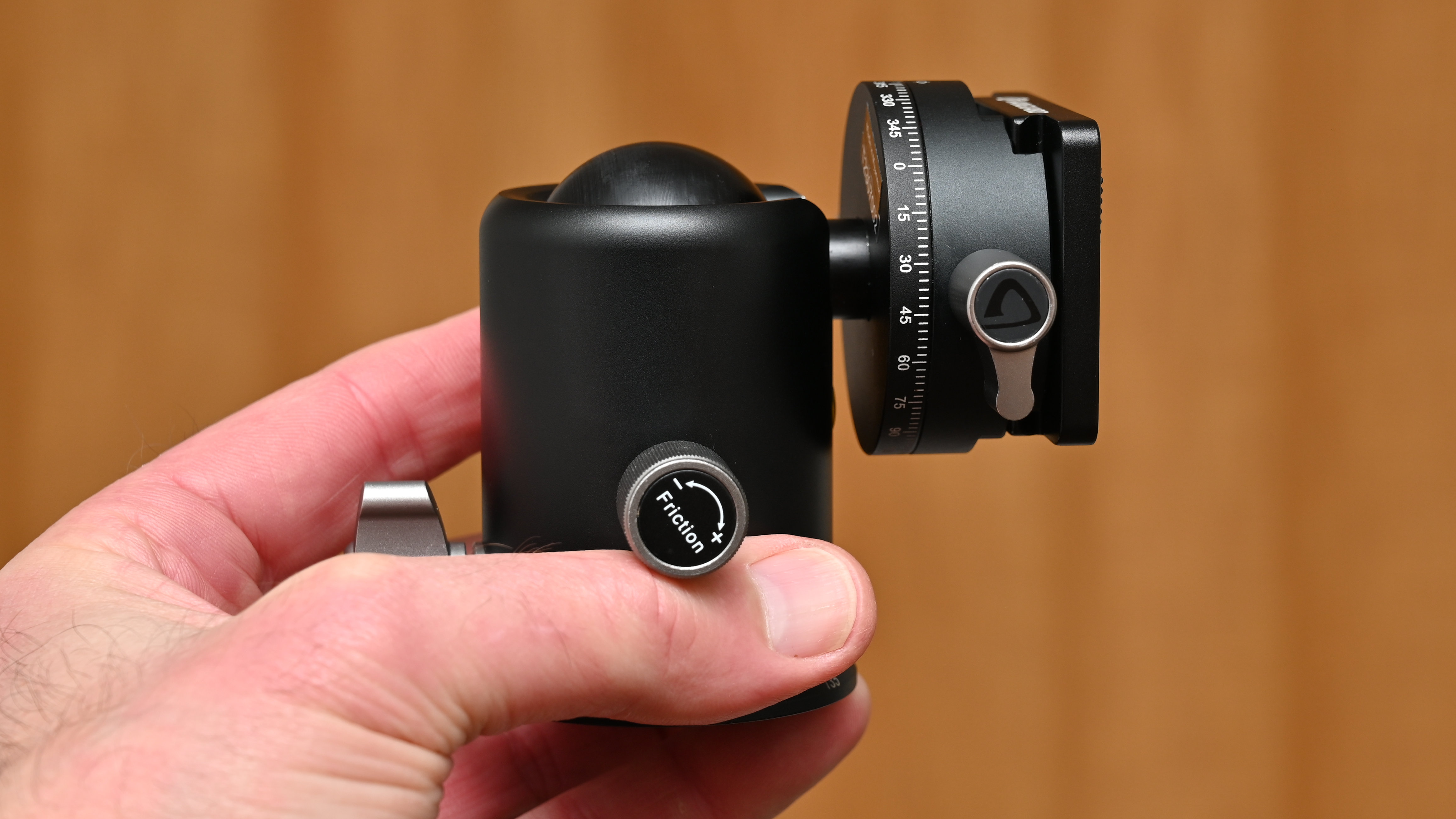
Vanguard VEO BH-250S: Verdict
I find that any decent ball head makes it easy to level my camera without the faff of endlessly adjusting individual tripod legs when I’m shooting on uneven ground. The thing that makes the Vanguard VEO BH-250S stand out from the crowd is its dual-axis panning facility, which helps keep everything on the level for panning as well as for static shots. The BH-250S certainly isn’t unique in this respect, but all the controls are very well implemented and intuitive in use. The head is also excellently engineered, and immaculately finished and it’s a top performer, making it very good value at the price.
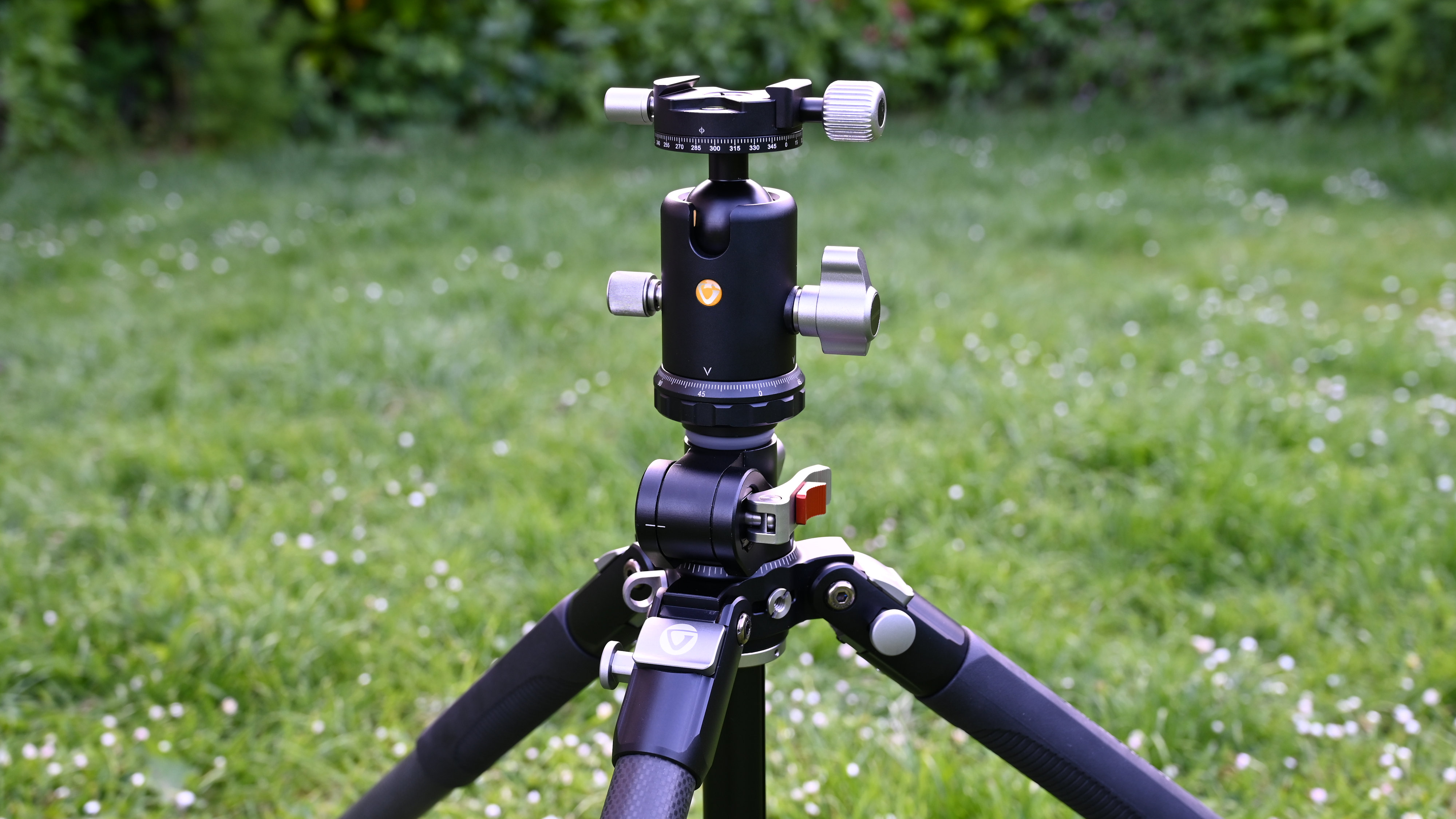
Should you buy the Vanguard VEO BH-250S?
✅ Buy this...
- Dual axis panning mechanisms.
- Suitable for very weighty cameras.
- You shoot panoramas of video.
🚫 Don't buy this...
- You only use lightweight cameras.
- You don’t need a panning facility.
- You’re rather have a simpler ball head.
Alternatives
Matthew Richards is a photographer and journalist who has spent years using and reviewing all manner of photo gear. He is Digital Camera World's principal lens reviewer – and has tested more primes and zooms than most people have had hot dinners!
His expertise with equipment doesn’t end there, though. He is also an encyclopedia when it comes to all manner of cameras, camera holsters and bags, flashguns, tripods and heads, printers, papers and inks, and just about anything imaging-related.
In an earlier life he was a broadcast engineer at the BBC, as well as a former editor of PC Guide.

